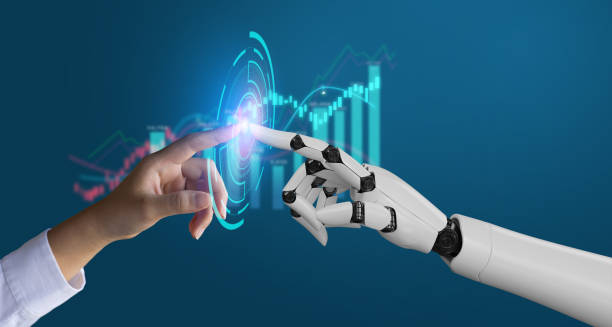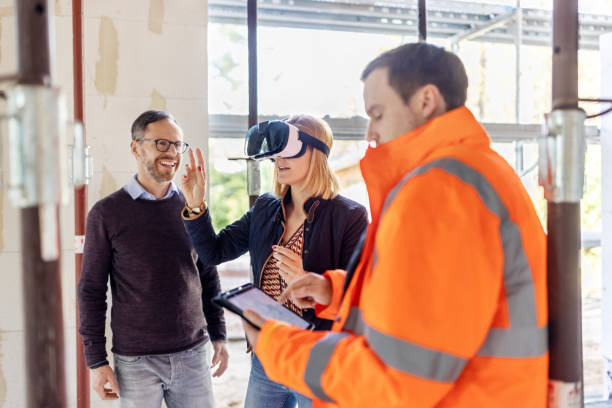Contents
- 1 Introduction
- 2 Early warning systems
- 3 Geographic Information Systems (GIS)
- 4 Drones in Disaster Management
- 5 Remote Sensing Technology
- 6 Data Analytics and Machine Learning
- 7 Communication Technologies
- 8 Emergency Management Software
- 9 Social media and crowdsourcing
- 10 Blockchain technology
- 11 Mobile applications
- 12 Cloud computing
- 13 Artificial Intelligence (AI)
- 14 Virtual Reality (VR) and Augmented Reality (AR)
- 15 Conclusion
Introduction
Today we discuss Technology in Disaster Management Today, many different businesses are improving their processes with the help of technology, and disaster management is not out of the question. Technology plays a very important role in disaster management, as it not only helps in handling crisis situations, but also in working out the effects of natural and man-made disasters.
In this article we will understand in detail the role of technology in disaster management and see how modern tools and techniques have revolutionized the field.
Early warning systems

The first and foremost role of technology in disaster management is in the early warning system. These systems provide early warning of natural disasters such as hurricanes, tsunamis, and earthquakes.
Modern early warning systems provide timely alerts with the help of satellite data and sensors, giving people time to prepare for emergencies. What is technology?
Geographic Information Systems (GIS)
Geographic Information System (GIS) is another major development in disaster management. With the help of GIS, officials can visualize and analyze geographic data, which helps in identifying disaster-prone areas.
It provides technology maps and spatial data that facilitate planning of disaster response and recovery operations. With the help of GIS, aid distribution and evacuation routes can also be optimized.
Drones in Disaster Management
Drones or Unmanned Aerial Vehicles (UAVs) have given a new chapter in disaster management. Drones can be used to survey inaccessible areas, which are difficult to assess after natural disasters.
These drones provide real-time images and videos that are integrated into damage assessment and streamlining rescue operations. Faster and more effective application of drone technology to search and rescue operations
Remote Sensing Technology
Remote sensing technology also plays an important role in disaster management. With the help of technology, detailed analysis of the ground surface can be done by satellite and aircraft.
This data helps in monitoring and forecasting the impact of natural disasters. Data from remote sensing can improve mapping of disaster-prone areas and land-use planning, which helps in long-term disaster management strategies.
Data Analytics and Machine Learning

Data analytics and machine learning are also revolutionizing disaster management. Technologies can be used to analyze large amounts of data to identify patterns and trends in disasters.
Machine learning algorithms augment disaster prediction models and help improve response strategies. Timely and accurate decisions can be made with data analytics for disaster response and recovery
Communication Technologies
Effective communication is an integral part of disaster management and technology has made significant advances in this field as well.
Modern communication technologies such as mobile networks, satellite phones, and social media platforms facilitate real-time information sharing and coordination. These technologies maintain communication between logons in emergency situations and coordinate response efforts.
Emergency Management Software
Emergency management software helps streamline the disaster response and recovery process. This software is used for incident tracking, resource allocation, and response coordination.
Advanced emergency management software provides real-time updates and data sharing, making disaster management operations efficient and effective. These tools agencies facilitate timely decisions and coordinated responses.
Social media and crowdsourcing
Social media and crowdsourcing have added a new dimension to disaster management. Social media platforms such as Twitter and Facebook provide real-time information and updates, which help disaster response teams stay abreast of the situation.
Crowdsourcing makes it possible for local communities and individuals in disaster-affected areas to share real-time reports and information, enhancing response efforts.
Blockchain technology
Blockchain technology is also making its way into disaster management. Is technology being used to ensure data integrity or transparency?
Blockchain can track and verify disaster relief funds and resource transactions, which helps reduce corruption and mismanagement. This technology makes the disaster recovery process secure and transparent.
Mobile applications
Mobile applications are another modern tool for disaster management. These apps provide emergency alerts, disaster preparedness tips, and real-time information.
Individuals and communities using mobile applications are able to manage disaster preparedness and response plans. These apps provide users with timely and relevant information through user-friendly interface and functionalities.
Cloud computing
Cloud computing plays an important role in disaster management.
Cloud-based platforms facilitate data storage, analysis, and sharing, which enhance disaster response and recovery operations. Cloud computing can efficiently manage large amounts of data and support real-time collaboration. This technology makes disaster management efforts scalable and flexible.
Artificial Intelligence (AI)
Artificial intelligence (AI) is also playing its role in disaster management. AI algorithms are being used in disaster prediction and risk assessment.
Disaster patterns and trends can be predicted by training machine learning models. With the help of AI, automated decision-making and intelligent response strategies can be developed, which streamline the disaster management process.
Virtual Reality (VR) and Augmented Reality (AR)

Virtual Reality (VR) and Augmented Reality (AR) are being used for training and simulation in disaster management. With the help of VR and AR, disaster response teams can be provided with a realistic training environment.
These technologies make training scenarios interactive and immersive, which enhance reaction readiness and skills. VR and AR make disaster management training programs more effective and interesting.
Conclusion
Technology in Disaster Management Technology has a fundamental role and change in disaster management. Disaster response and recovery efforts are being enhanced with modern equipment and techniques.
From early warning systems, GIS, drones, and remote sensing technologies to data analytics, communication technologies, and AI, each technology is improving disaster management with its own unique advantages.
Through innovation, we can mitigate the effects of disasters and make communities more resilient and prepared. With the help of technology, disaster management can be made even more effective and efficient in the future.





